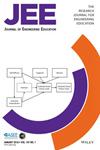Lacking time: A case study of student and faculty perceptions of academic workload in the COVID-19 pandemic
Abstract
Background
To avoid the spread of COVID-19, most engineering programs rapidly shifted to emergency online education, and prior research has associated online education with academic overload. Before the pandemic, engineering curricula were already packed with content and course assignments, so more studies should explore how the unprecedented conditions of remote learning affected the intensive academic workload of engineering programs.
Purpose/Hypothesis
This study addresses the following research question: How did the COVID-19 pandemic affect the perceptions of engineering instructors and students regarding their academic workload? Thus, the main research objective is to explore the influence of COVID-19 on the perceived academic workload, extrapolating lessons learned for engineering education settings.
Design/Method
During 2020, we developed a single-case study to understand academic workload in 22 engineering majors at a large Latin American university. We triangulated different sources of institutional and research-focused evidence, including two instructor surveys (n = 110), two student surveys (n = 2218), two student focus groups (n = 18), and workload measurement surveys (n = 3131).
Results
Both instructors and students experienced academic overload since the outbreak of the COVID-19 pandemic. Throughout the first year, instructors became capable of accommodating course activities and assignments to students' particular circumstances. Regardless of these efforts, students continue perceiving academic overload, particularly affecting those who experience connectivity issues or frequent problems with their personal computer or tablet.
Conclusions
Further efforts are needed to support course planning and self-regulated learning in engineering education. In these lines, lessons learned were captured and shared to inform engineering education research and practice beyond the COVID-19 pandemic.

 求助内容:
求助内容: 应助结果提醒方式:
应助结果提醒方式:


